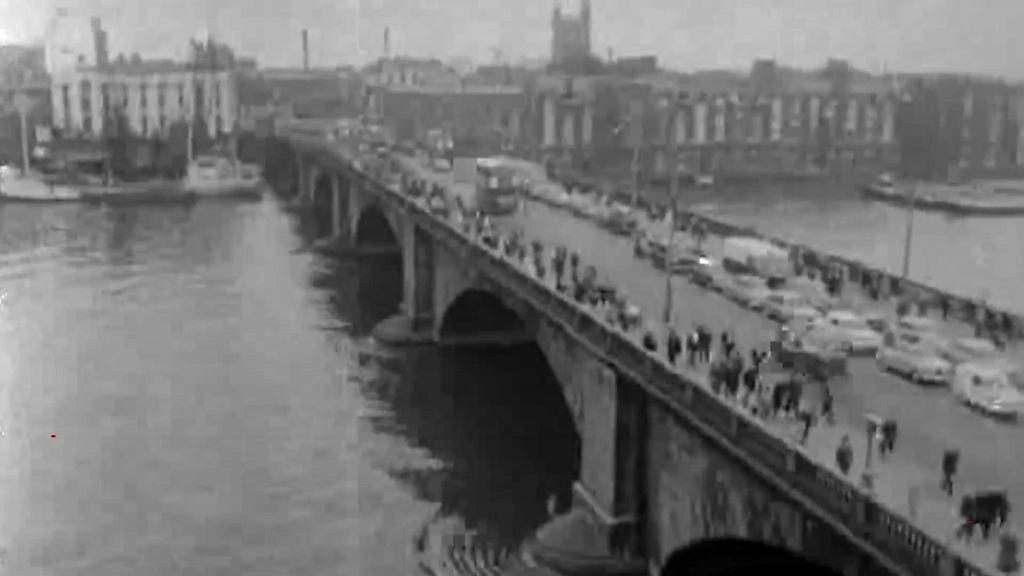London Bridge road works force partial Thames crossing closure
- Published
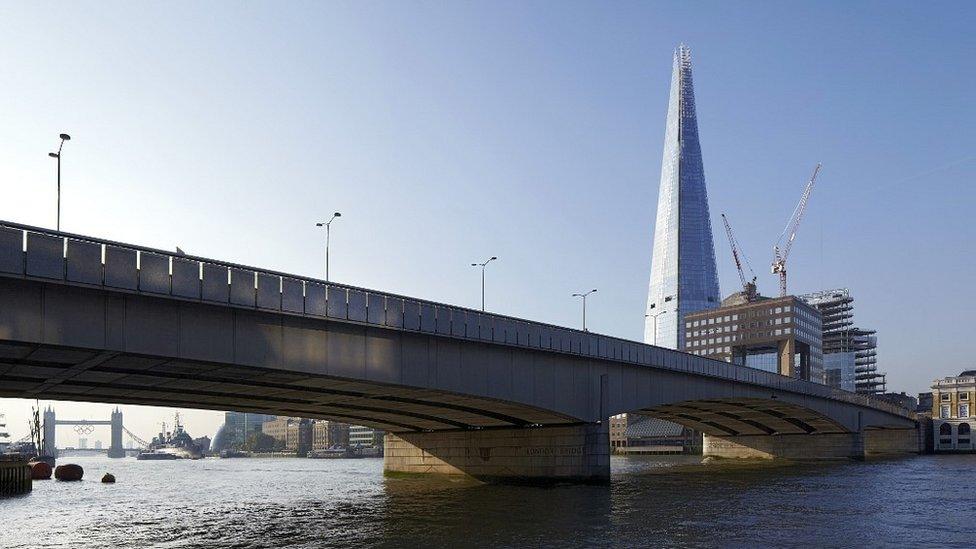
Works on London Bridge are expected to last until October
London Bridge has been closed to most private vehicles for seven months while major road works are carried out.
Buses, licensed taxis, motorcycles and bikes are the only modes of transport allowed to use the central London crossing, until the end of October.
Pedestrians can use the bridge, on restricted routes, but cycle lanes will not be in operation.
Hammersmith Bridge, in west London, is also currently closed to all vehicles for repair work to take place.
Transport for London has warned that surrounding roads around London Bridge will be "very busy".
Diversions have been put in place to take traffic across Tower Bridge and Blackfriars Bridge, although both are expected to very busy, especially at peak hours.
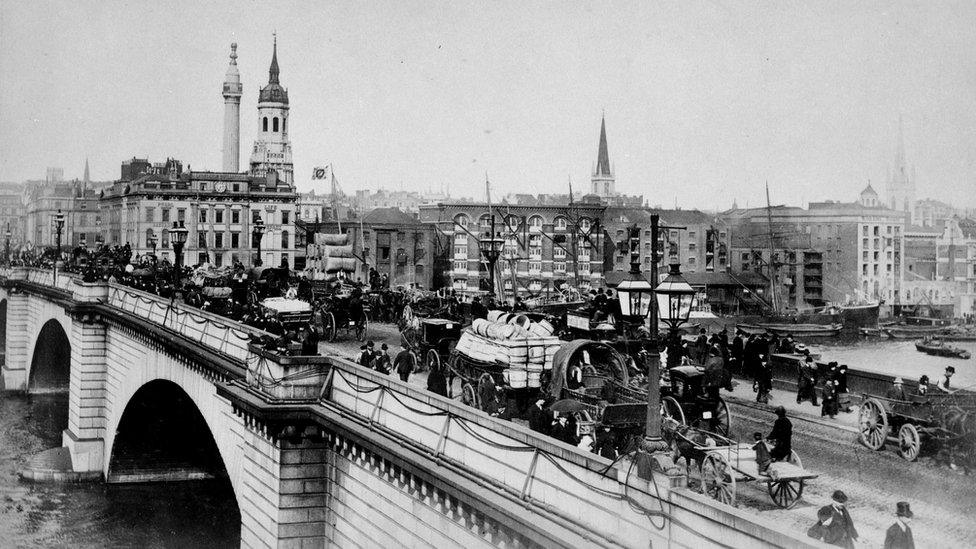
The current bridge replaced another which opened in 1831, before later being moved to the US
The City of London Corporation is carrying out the work which will see entire surface being re-waterproofed and re-surfaced.
Twenty-four of the bridge's bearings will also be replaced.
The corporation said the work was "vital" and "will ensure the bridge remains operational for years to come".

A brief history of London Bridge
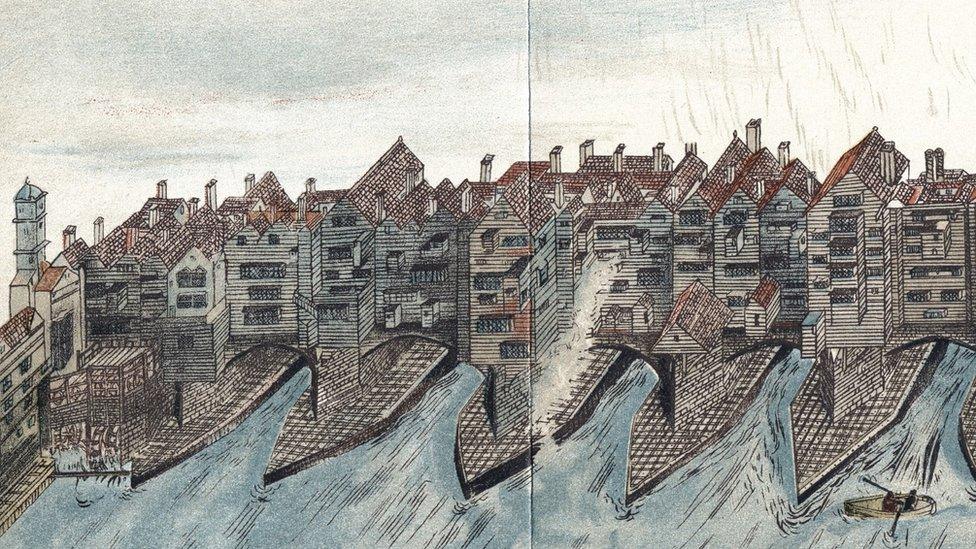
Old London Bridge once boasted houses, shops and chapels
Numerous structures have spanned the Thames between what is now Borough High Street and King William Street in the City of London.
The first river crossing was thought to have been created by the Romans nearly 2,000 years ago.
Later ones were destroyed by invasions, storms and fires, while the Medieval stone bridge was packed with houses, shops and chapels.
It was also where the heads of people considered traitors, like Thomas Cromwell and William Wallace, were displayed on spikes.
The current bridge opened in 1973, replacing another which was sold to an American entrepreneur after it was found to be sinking into the Thames.
- Published11 April 2019
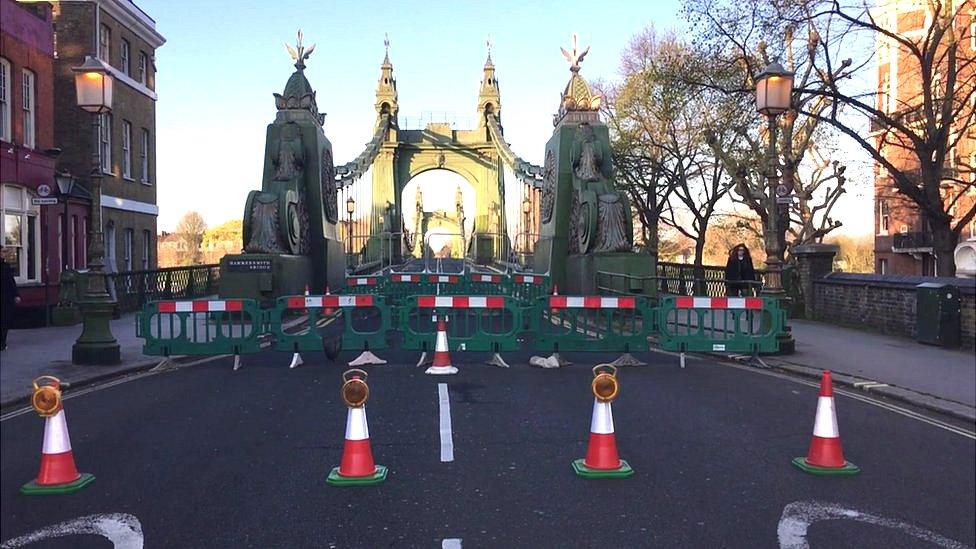
- Published18 April 2018
